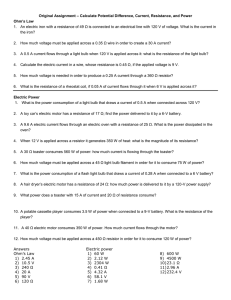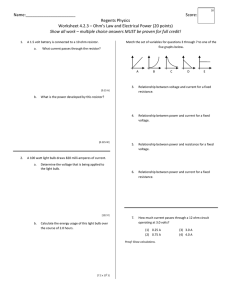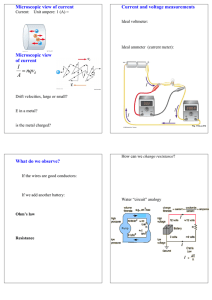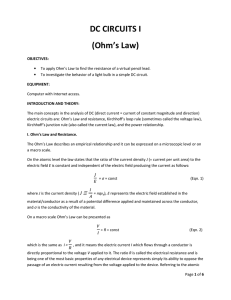SNC1D PHYSICS: OHM`S LAW ASG#5 - youngs-wiki
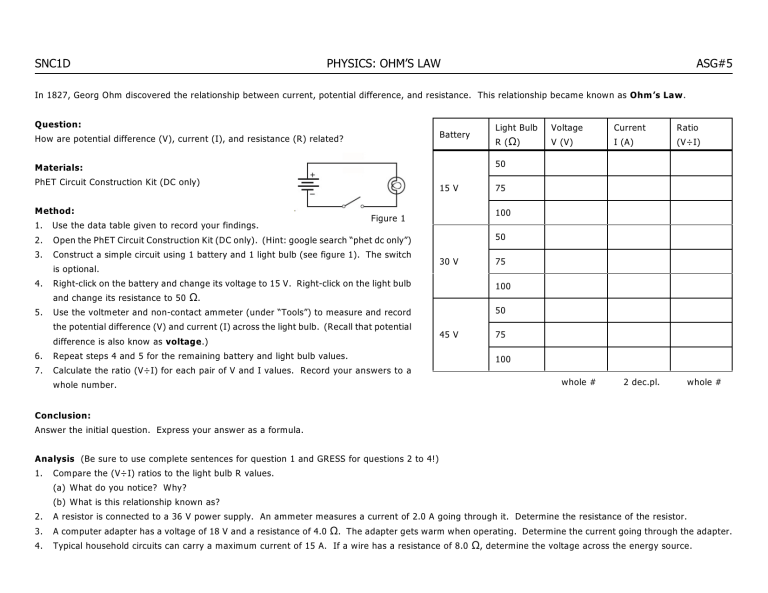
SNC1D PHYSICS: OHM’S LAW ASG#5
In 1827, Georg Ohm discovered the relationship between current, potential difference, and resistance. This relationship became known as Ohm ’s Law .
Question:
How are potential difference (V), current (I), and resistance (R) related?
Materials:
PhET Circuit Construction Kit (DC only)
Method:
Figure 1
1.
Use the data table given to record your findings.
2.
Open the PhET Circuit Construction Kit (DC only). (Hint: google search “phet dc only”)
3.
Construct a simple circuit using 1 battery and 1 light bulb (see figure 1). The switch is optional.
4.
Right-click on the battery and change its voltage to 15 V. Right-click on the light bulb and change its resistance to 50
S
.
5.
Use the voltmeter and non-contact ammeter (under “Tools”) to measure and record the potential difference (V) and current (I) across the light bulb. (Recall that potential difference is also know as voltage .)
6.
Repeat steps 4 and 5 for the remaining battery and light bulb values.
7.
Calculate the ratio (V÷I) for each pair of V and I values. Record your answers to a whole number.
Battery
15 V
30 V
45 V
100
50
75
100
50
75
100
Light Bulb
R (
S
)
50
Voltage
V (V)
75 whole #
Current
I (A)
2 dec.pl.
Ratio
(V÷I) whole #
Conclusion:
Answer the initial question. Express your answer as a formula.
Analysis (Be sure to use complete sentences for question 1 and GRESS for questions 2 to 4!)
1. Compare the (V÷I) ratios to the light bulb R values.
(a) W hat do you notice? Why?
(b) W hat is this relationship known as?
2.
A resistor is connected to a 36 V power supply. An ammeter measures a current of 2.0 A going through it. Determine the resistance of the resistor.
3.
A computer adapter has a voltage of 18 V and a resistance of 4.0
S
. The adapter gets warm when operating. Determine the current going through the adapter.
4.
Typical household circuits can carry a maximum current of 15 A. If a wire has a resistance of 8.0
S
, determine the voltage across the energy source.



